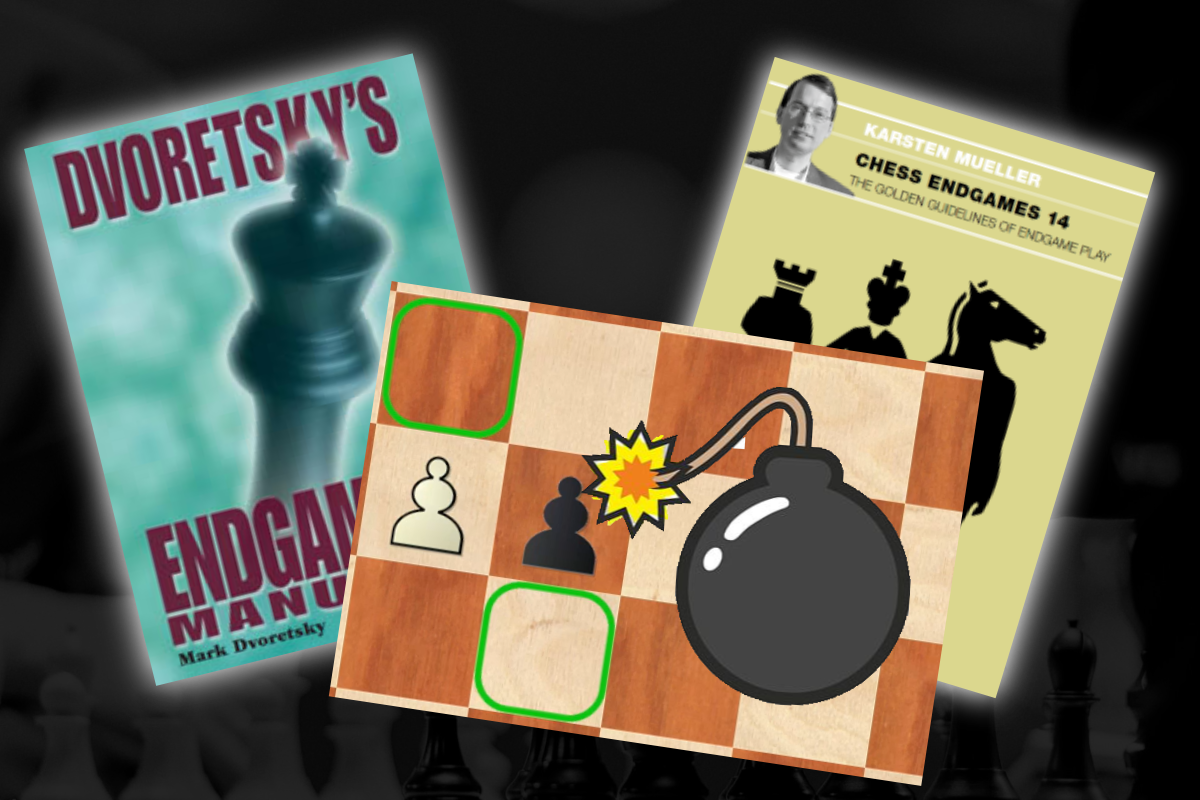


Endgame study has always seemed more like a necessary poison than a desirable choice, yet each attempt to really get into it, chock full of good will and self-motivating pep talks, fell short. Somehow the exercise never managed to really rid me of the impression of taking some bitter medicine, and at some stage I would let myself be lured by the siren song of more exciting things.
The most successful teacher until now, for me, had been GM Mueller, who needs no introduction to ChessBase readers, with his wonderful DVDs, but while they offer a very painless path, I realized I needed a more collected study and the mental imprint it provides.
In Yet Another Attempt to Become a Chess God (plagiarized from one of my self-motivating pep talks to myself), I took up Dvoretsky's Endgame Manual, the ChessBase version. This may sound like just a plug, but really it is more than that. This ChessBase edition was designed to be consumed/read/studied in ChessBase using its myriad tools as well as dual entries for each exercise. For example. the first entry is the plain position with instructions and the second entry will be the same but with the solution and analysis.

Although the great trainer published many books, this is generally considered his magnus opus, and I now see why. It isn't because he explains each theme and lesson in crystal clear prose with no way for you not to understand, since others have achieved this too and it would be ridiculous to claim otherwise. No, what really stands out are the specific examples and exercises he chooses.
This is something I haven't seen anyone mention really. They not only can show clarity, they are all almost magic in their depth and beauty. Let me give you an example, since a picture is worth a thousand words.
The chapter on mined squares first starts with the necessary theory and explanations. Here is a standard position illustrating the concept:
Both c5 and e6 are mined squares. Whichever side moves to their mutual mined square will lose after the rival does the same. For example, if Black moves Kc5, then White replies Ke6 and Black is lost. The reverse is true if White moves first to Ke6 and Black replies Kc5. Ok, simple enough. (For the record, this position is winnable for the side to move first, but let's leave that aside for the moment.)
Then our illustrious teacher uncorks the following position as an 'illustrative' example:
At first glance one thing may have you scratching your head as it did mine. What on earth does this position have to do with mined squares??
The solution is that White extends a brilliant and unassuming trap with 1. Bd1+ and Black falls right into it with 1...Kh4?? 2. Bg4!! h5
And here White played 3.Kf5!! and after the forced ...hxg4 4. hxg4 all is clear:
The trap is sprung and we now see Black on the wrong side of a mined square situation. Genius!
When you see that sort of seemingly impossible transformation as a means to reinforce a lesson, you are not only left with a sense of wonder, but your mental inhibitions are removed as you now yearn for more such examples.
You can follow the lessons being studied in the Study Chess with Me series
The power of the exercises also shines through as they all seem to turn into the illustrative examples given before. Consider this situation from the final throes of a game excerpt he shows us between Alekhine and Yates:
In this position Alekhine played 1. Kf2! and Black resigned since 1...Kxe5 2. Kf3 is won. Now let's take a look at one of the exercises.
Again how this position and exercise ties into a lesson on mined squares is not immediately apparent. What is more, it is not about 'Black plays and wins' or the sort. Dvoretsky warns his student: "This exercise is rather difficult. You must judge whether Black ought to go into the pawn endgame."
So much like a game we are shown the position before the possible simplification, to judge whether Black should go into the pawn endgame at all.
Well, it turns out that five moves into the main line of the solution we reach this situation:
Scroll up and look at that Alekhine vs Yates position one again. Look familiar? As a result the solution is found very easily: 1... Kh7! 2. Kxg4 Kh6 and Black wins.
You can try your hand at the full exercises here and see my failures and successes as well as what I saw
Personally, this entire experience has been quite a revelation, and if you have been on the fence on the topic of studying endgames beyond the minimum to not outright embarrass yourself at the board, I can promise you there will be joy and pleasure in the process as well.
Now, a fair warning: while Dvoretsky's lessons and examples may all be crystal clear, breathtaking and engaging, they are not easy. However, they are also as rewarding as they are challenging. While I can wholeheartedly recommend Dvoretsky's Endgame Manual, don't hesitate to opt for a less arduous choice such as GM Mueller's Chess Endgames series.
Click here to purchase Dvoretsky's Endgame Manual
Click here to purchase Chess Endgames by GM Mueller
| Advertising |